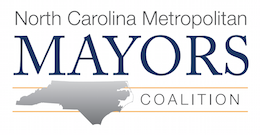ADOT implements $100 million plan to address budget shortfall
Closure of some rest areas, customer services offices to begin
PHOENIX – The Arizona Department of Transportation is facing a $100 million budget shortfall that will require further reductions in services, office closures, highway construction, maintenance and staff.
ADOT’s plan to reduce its use of state highway funds by 25 percent includes the temporary closure of 13 highway rest areas, shutting down 12 Motor Vehicle Division field offices, deferring $370 million in highway construction projects, deferring maintenance activities, consolidating customer services, and a 10 percent staff reduction.
“More than $500 milliion in transportation funding has been diverted in the past year to address the state’s budget challenges. ADOT’s customers pay their own way by using transportation services, but because the state is using transportation funds to pay for other needs and people are buying less fuel and fewer vehicles, we are simply running out of money,” said ADOT Director John Halikowski.
Implementation of the budget-reduction plan will begin this month and stretches across all of ADOT’s operational areas.
The most immediate signs of ADOT’s actions to weather the “perfect storm” will be at highway rest areas. Beginning the week of October 19, operations at 13 rest areas will be suspended leaving five ADOT and more than a dozen non-ADOT operated rest areas along the highway system. Rest areas impacted are: Bouse Wash, Canoa Ranch, Ehrenberg, Hassayampa, Haviland, Mazatzal, McGuireville, Meteor Crater, Mohawk, Parks, Salt River Canyon, San Simon, and Sacaton. Two of these facilities – Mazatzal and Salt River Canyon – are already closed due to water system issues.
When these rest stops are closed, they will be completely inaccessible with all services shut down, but there will be a presence of ADOT and Department of Public Safety personnel. Maps are available at www.azdot.gov/BudgetRoadmap showing the nearest location for services from each of the closed rest areas – in some cases, only miles away.
To help address the needs of drivers with reduced opportunities for rest when on the road, ADOT also will develop a program in partnership with businesses to welcome travelers to stop and use restroom facilities free of charge.
For driver services, up to 12 Motor Vehicle Division offices around the state are being considered to close, following a facilities review now underway. Proximity to other offices or third-party outlets will be used to help identify the offices scheduled for closure. Saturday office hours will be eliminated effective November 1 to focus customer service staff on the busy weekdays.
ADOT will continue to provide online services offered through www.ServiceArizona.com and through 140 third-party vendors statewide, giving customers alternatives to visiting a MVD office. To find a third-party office visit www.azmvdservices.com.
While ADOT received $350 million in federal funding for “shovel ready” projects through the American Recovery and Reinvestment Act, state funding for other projects will be cut by $370 million over the next four years. The challenge ahead: Arizona must have sufficient state highway money to match federal transportation funding collected through gas taxes. Without matching funds, Arizona risks losing its share of federal funds, meaning gas taxes paid by Arizonans would fund improvements in other states.
In the 2009 fiscal year, ADOT used all of its federally allocated funding.
“Drivers will continue to see projects being built across the state because the federal government sends money to Arizona for highway construction,” Halikowski said. “That money is restricted by federal and state laws to pay for construction activities and cannot be used for general operations, such as MVD services.”
Highway maintenance activities will focus on safety, like emergency response, snow and ice removal, and emergency repairs. Maintenance activities to keep state highways operational, including landscaping and graffiti removal, will occur less frequently or not at all. Maintenance activities at the state-run Grand Canyon Airport also will be limited to focus on airfield safety.
“All of this deferred maintenance and construction work will have to be done at some point,” Halikowski said. “These needs are not going away but we recognize the responsibility to address short-term financial issues while prioritizing what must be done. Drivers will notice a difference, unfortunately.”
This is the second year of major cost reductions for ADOT. Last fiscal year, ADOT aggressively took action to cut $60 million by reducing employee expenses, requiring employees to furlough one work day per pay period, cutting highway maintenance activities, reducing operational costs, and eliminating consultants and other support costs.
For more information on the impacts of the 2010 budget, visit www.azdot.gov/BudgetRoadmap.
October 8, 2009
http://www.azdot.gov/CCPartnerships/News/NRel2397.asp


